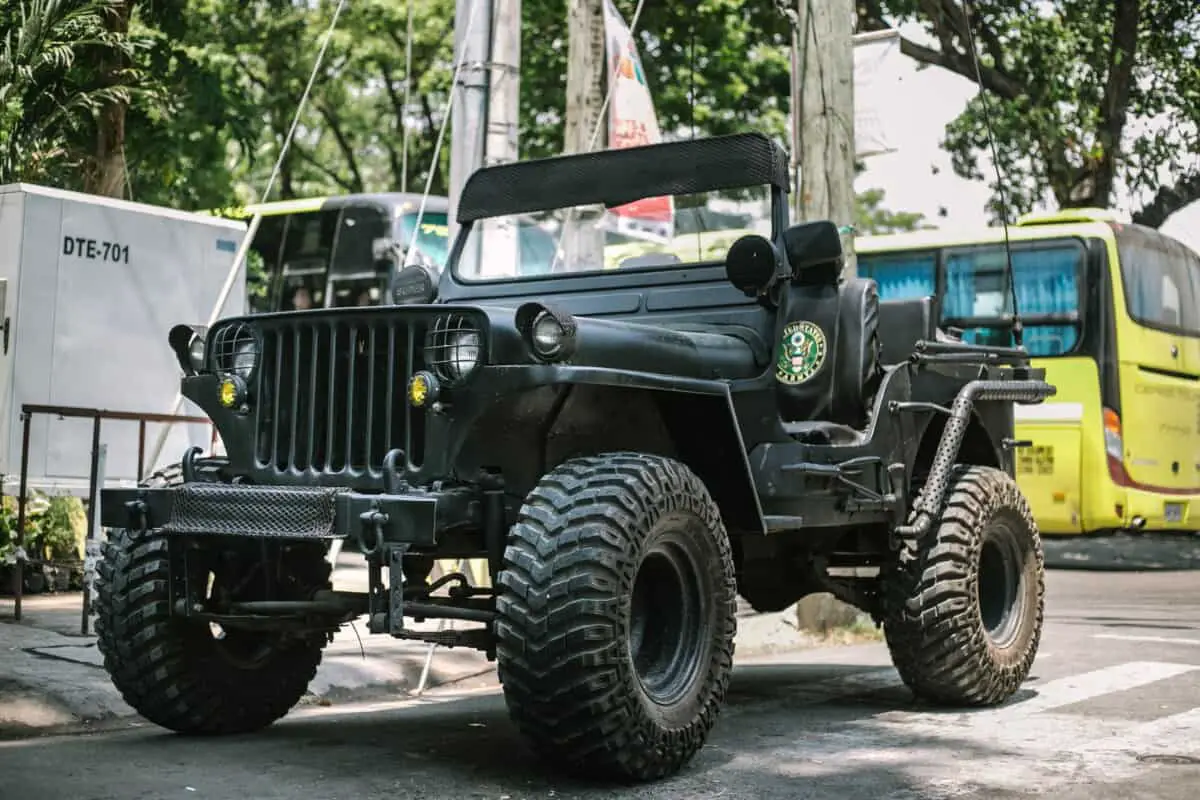It’s one of the longest-standing and most-loved American car brands. Originating deep from within America’s 20th century, they bear a name that comes with wide praise from both off-roaders and daily commuters. The name of Jeep is one most are quick to recognize, but why do we call them that?
The name Jeep originated right alongside its classic WWII vehicles. Although the original company name was Willy’s Overland Motors, Jeep emerged as a nickname given by soldiers. This nickname quickly stuck, and the rest is history.
There is plenty of extra speculation and theories about where the name Jeep originated. Regardless of precisely where the quirky name came from, though, there is a rich history behind how Jeep won over the hearts of America.
Origins of the First Jeep
Willys-Overland Motor Company produced the very first Jeep. You may recognize the name Willy, as it stuck around for a while, even after Jeep got its name. A few different models were put out into the 60s possessing the tag “Willy’s.”
The very first Jeep was produced for America’s WWII efforts. Before the war even started, the United States government went looking for a new truck. They needed the vehicles to meet a few specifications. It needed to be:
- Very lightweight
- 4×4 capable
- Mass production capable
- Simple construction for field repairs
Over a hundred bids from varying manufacturers were submitted. Among them was Willy’s Quad. This first light truck looks very similar to modern Wranglers but with a few key differences:
- Many Wrangler fans these days are used to being able to remove the doors and top. The first models were similar, except they never included doors or a top in the first place.
- The original Jeeps had different tires. While new car tires are filled with air, the original tires were solid rubber. This cut down on possible deflations but made for a very bumpy ride. Ride quality certainly wasn’t at the top of the list, though, for these first models.
Willy’s Quad
Willys Quad was the first version of the ‘Jeep’ that would later go on to win the U.S. government’s bid. It was incredibly light, allowing for mass transportation overseas by whatever means necessary.
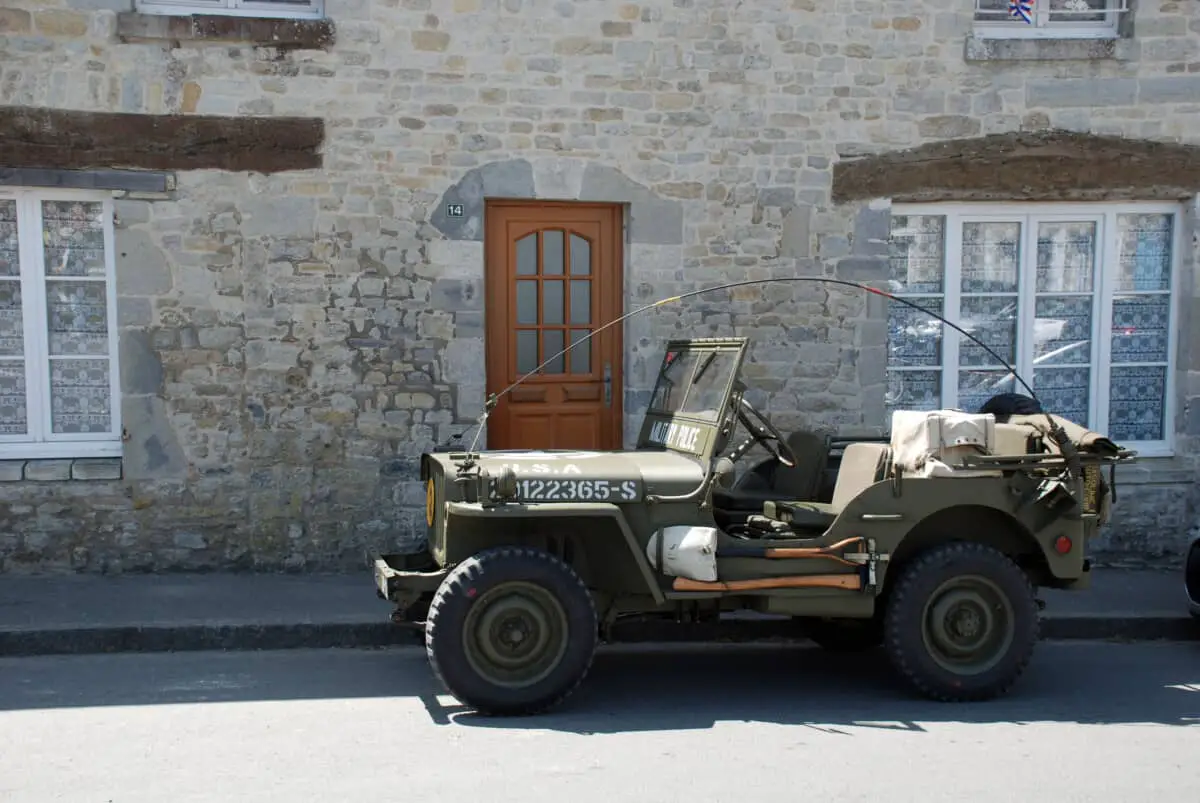
Willy’s Quad looks quite like the later Jeeps put into total production. It was constructed out of lightweight sheet metal and cut down everything that wasn’t necessary. Its body walls only went up about halfway, and it had no doors.
It was barebones. The truck had no solid top. Instead, the manufacturer used a simple soft top. Further, its 4×4 system was top of the line. The short wheelbase and approach angles meant the original Jeep was perfectly tuned for off-roading right off the assembly line.
Willy’s Quad never went into full production, but it served as the prototype for later models sent directly into battle.
This first Jeep, not yet known by that name, was very similar to another prototype model made by Ford. Ford’s “Pygmy” was nearly identical to this first Jeep. It had the signature grill on the front, cutout doors, and a simple style. When they made it to testing, though, Willy beat out Ford.
Ford did end up, however, manufacturing many of the future M.B. models designed by Willy’s Overland.
Getting Closer to Army Specifications
Following the first Quad prototype, Willy’s Overland Motors wanted to tune the vehicle more to the Army’s specs. The original “Quad” made it pretty close but lacked a few criteria.
Willy’s new model, produced in 1941 called the “M.A.,” worked to improve upon that. First, it had to meet the stringent weight specifications. The Army wanted to cut down each model to less than 2,160 pounds.
This was difficult for Willy’s Overland, but some ingenuity helped make it fit. The cutouts where a door would generally be found were made larger. They even shaved down every nut and bolt in the vehicle to reduce weight wherever possible.
This new model was manufactured out of lighter body panels, and anything unnecessary was simply cut out of the design. This model was then subjected to rigorous testing by the Army. They were put through off-road and torture tests, high and low, to ensure they wouldn’t fail when out on the battlefield.
After the military tested every different bid, Willy’s M.A. was the only one left standing. Although the United States was not yet at war, its allies overseas were. Obviously, the German threat was going to persist, and America’s allies needed a way to get around.
So, the United States government ordered many of these initial models and shipped them to Russia and England for use against the enemy. This original Jeep went through one more facelift before the United States was called to war.
The First Battle Tested Jeeps
Pearl Harbor and America’s call to arms against the Axis powers came soon after the first M.A.s were sent overseas. Shortly after that, America needed its vehicles for war.
A quick facelift of the original Quad and M.A. led to the easily recognizable M.B. Much was the same, but it looked slightly different. The front grill was reduced from nine to seven grills, as is it is today. Facilities for mass production were tooled, and tens of thousands of “Willy’s M.B.s” were ordered.
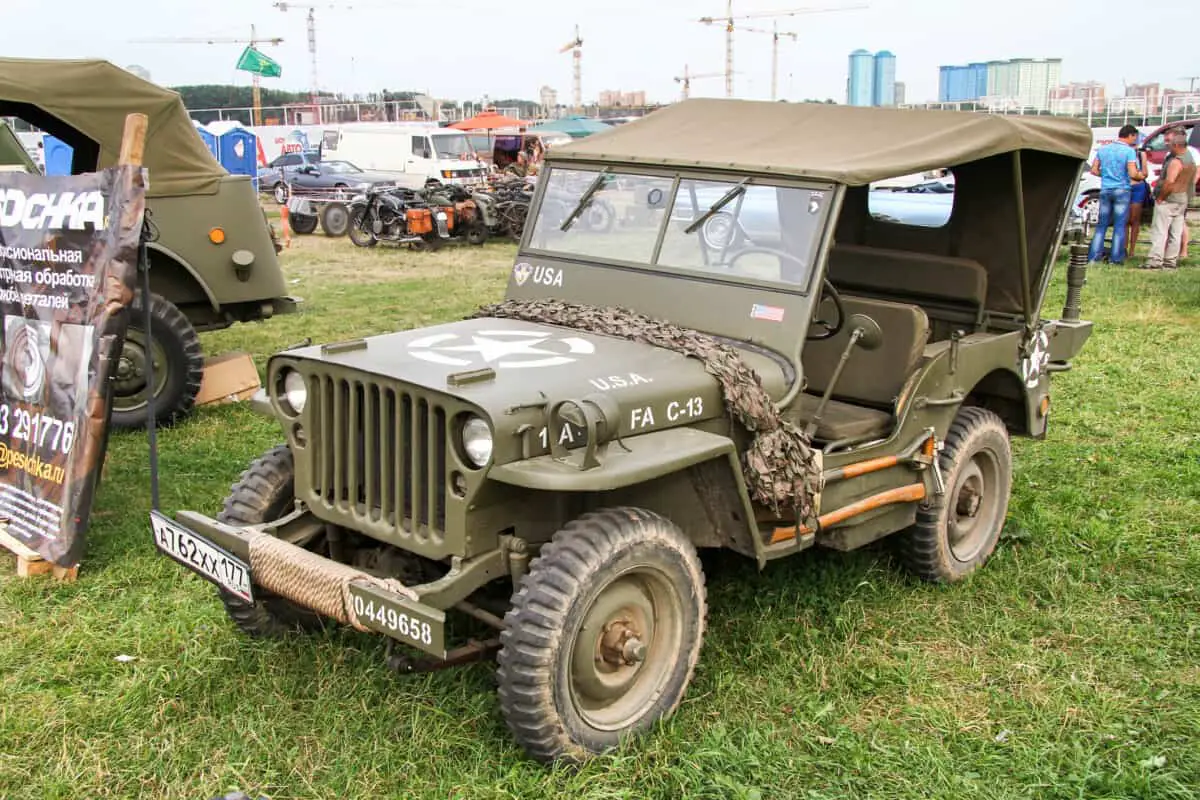
Their lightweight and small size allowed them to be flown quickly behind enemy lines, and the incredibly versatile vehicle had many uses out on the battlefield. For what was initially ordered as a light reconnaissance vehicle, the M.B. took on many roles.
The first Jeep model could be used for virtually anything, given its simplicity. It could be used for:
- Essential troop transport
- Medevacs
- Even front line battle
- Machine guns were frequently mounted on the vehicles
Eventually, specialized versions of these vehicles were manufactured to fit any battlefield need. Whether out in the desert, tundra, or deep water, every need for the military was manufactured by Willy’s Overland.
The M.B. instantly became the icon of America’s WWII profile. Anyone looking at photos or videos of WWII will find dozens of these M.B. vehicles loaded with troops gear and anything else. These first years also provided the strange name Jeep.
From M.B. to Jeep
What is now known simply and widely as a “Jeep” started as the M.B. in the fields of battle. A few different legends, though, have taken hold. Some say that the original soldiers driving the vehicle called it “Peep” or “Beep” because of how it looked and handled.
Throughout battlefields and Army bases, the vehicle was apparently regularly called “Peeps.” It was nothing more than a nickname for the little car.
Allegedly, Red Hausman, one of the original demonstration drivers, overheard this from the soldiers. He mistook it, though, and called it “Jeep.” When speaking to a journalist, he said that it’s called a Jeep simply because that’s what the soldiers who were driving it call it.
Perhaps that simple misunderstanding was what coined the word Jeep.
Some also say that the word Jeep never even started out as a name for the vehicle. Instead, the word was used commonly within the military as slang to describe anything that looked funny or awkward.
Others say that Jeep was derived as a pronunciation of what Ford called their version of the reconnaissance vehicle or General Purpose Vehicle, the G.P. When pronounced out loud, it sounded like “Jeep.” The G.P. was simply another technical name for the Willy’s M.B. when manufactured by Ford.
The origins of the name Jeep are unknown and often contested. The first verifiable use of the word comes from a Popeye comic strip. Still, the name Jeep ended up getting coined and became the official name of the vehicle and brand.
Jeep’s Military History
Much of Jeep’s acclaim is rooted directly in its purpose-built style. It was one of the first widely produced 4×4 vehicles made just for off-roading, and it excelled in that. It roved around the fields, forests, and deserts of WWII battlefields with ease.
Throughout WWII, over half a million Jeeps of varying specializations were produced. If they had to ford rivers to get wounded back to nurses, they would do it. If a particular Jeep needed to climb desert dunes to get a vantage point on the enemy, no worries.
Some specialized Jeeps were built for purposes such as:
- Full amphibious: these models were specialized in swimming.
- Medevacs: specific models were outfitted with cots to transport casualties
- Deepwater: while not fully amphibious, these models featured intake and exhaust snorkels to travel through deep water.
- Stretched: a limited amount of models were fitted with two more wheels on the back and an extended cargo bed.
- Weaponized: many models were fitted with machine guns, rocket launchers, and artillery cannons to be used on the front lines of combat.
There really was no better way to test Jeep’s off-road capabilities than to send it straight into battle. Although not many made it back, Americans took notice of this. Further, the hundreds of thousands of G.I.’s returning kept their beloved Jeep close in memory.
The original vehicle created a legacy that lived on through veterans’ memories. At one point, the Jeep was even awarded a Purple Heart, the award given to those wounded or killed in combat. The Jeep indeed was a beloved vehicle that was instrumental to the Allied WWII victory.
This legacy of performance in the ultimate torture tests truly was the cement in the foundation of years of Jeep vehicles.
The First Civilian Jeep
After the war ended, plenty of M.B.’s were available on the surplus market. So many of these vehicles were available for sale that magazine contests sought to create new ideas for how they could all be used. The vehicle’s adaptability made no problem for repurposing in the domestic market.
When the military production of the M.B. ramped down, domestic demand remained. Willy’s Overland began producing civilian models but still without an embossed Jeep name. The first C.J.’s (civilian Jeeps) were branded as “Willy’s.”
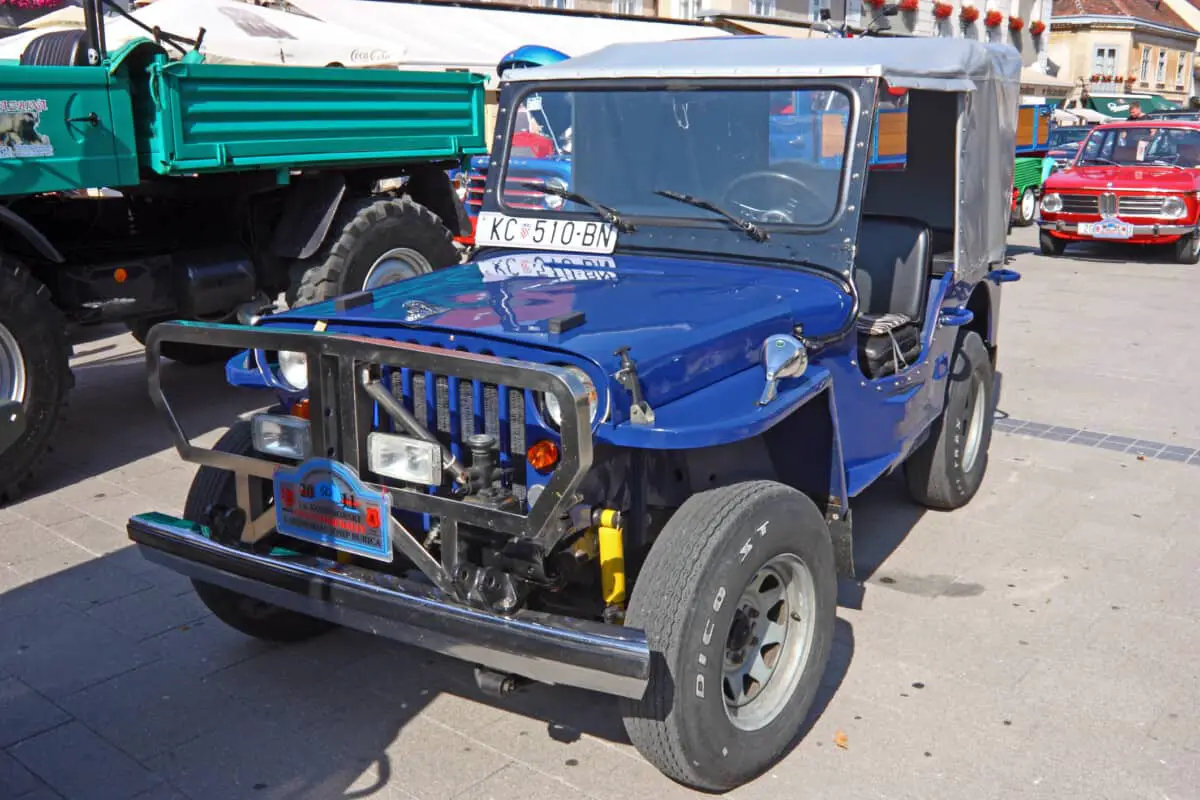
At the time, the most tremendous demand existed within America’s farmland. Those working pastures and fields required a reliable workhorse to make their living.
The very first domestically available Jeep hardly changed much from the M.B. Although weight requirements were less of a problem and other amenities could be added, Willy’s decided to keep it much the same.
The few changes they made were oriented for comfort and ease of use:
- New seats: better padding leads to more comfort
- New suspension components: new coils and shocks made it a smoother drive.
- A tailgate: making cargo areas more accessible
- Reworked transmission: new gearing allowed higher speeds and better towing
They began manufacturing the new “C.J.’s” to meet the farm demand, and the new C.J.s sold like hotcakes. Many of these original C.J.’s are still kicking on down the road today. Although many may not be too inclined to beat them up in farmland, the fact they still are found on roadways today is just another testament to their durability.
The popularity of this model has yet to die down. Another run of the C.J.s was made years later, finally using the name “Jeep.” Since then, countless Wranglers have been produced for America’s roads, or really, off roads.
New Jeeps, New Uses
After the initial post-war boom in C.J. sales, Willy’s Overland began to produce new, varied cars, each with the original 4×4 off-road mentality. One of the first vehicles that did not look anything like the original Jeep was a station wagon.
It was simply called “Willy’s Wagon” and featured more than two seats and much exterior wood trim. The Willy’s Wagon sought to break into less rugged civilian markets but tried to retain the appeal of being able to go anywhere.
It was advertised as having the comfort of standard vehicles of the time while also providing workhorse duties.
After that, a pickup truck was manufactured to continue Willy’s line of equipment geared towards farms. The first pickup truck they made was called Willy’s Overland Truck. It featured a standard cab and a decent-sized bed to work on the farm.
While these vehicles didn’t have many problems, they simply never made it into the league of popularity that the original M.B.s and C.J.s did. Eventually, though, Willy’s Overland decided to double down on the Jeep.
A second model of C.J. was made, this time proudly bearing the name “Jeep.” It hardly made any changes to the original C.J., minus a slightly different windshield and an improved transmission.
This Jeep C.J. went on to be the forefather of the Wrangler but was one of the last vehicle models produced by Willy’s Overland before strings of buyouts and mergers.
The Legacy of Willy’s Overland
In the postwar period, Willy’s Overland produced many different vehicles, each with a particular market in mind. At the same time, though, they maintained the go anywhere do anything mentality.
Each vehicle that they made had some form of ruggedness and usability built right in. The original light truck style persisted as an icon, but Jeep’s vehicles’ history came to fruition with their experimentation of body and chassis styles.
When looking at how Jeep is experimenting today, with SUVs and pickup trucks, one doesn’t need to look far to see the origins of inspiration. Dozens of different models were produced for wartime needs just as much as they were for civilian needs.
Arguably, this experimentation was what embedded Jeep into the minds of Americans as more than a farm or wartime vehicle. Those that found the use of Jeeps back in the day probably have good memories of it working well for them.
At the end of the day, each product that Willy’s Overland made foreshadowed how the Jeep brand would live in the future.
When Exactly Did the Name Jeep Arrive?
Throughout the various postwar models that Willy’s Overland produced, the word Jeep popped up here and there, but it was never fully cemented as a name. Most of the trucks that were made simply were advertised as Jeeps without having the name embossed on the vehicle.
For example, advertisements called Willy’s Overland Truck and Station Wagon “Jeeps.” This suggests that the name that existed back in the day less as an official name but a solid nickname for the idea on which they were founded.
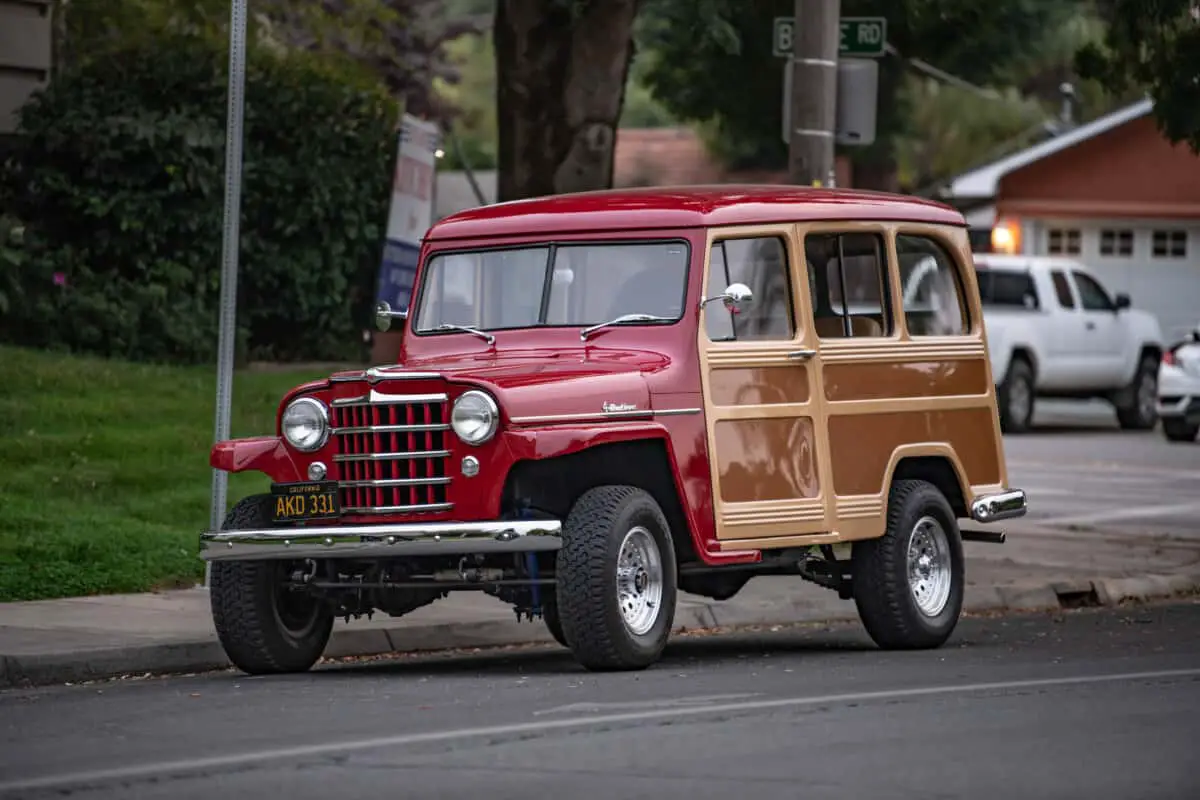
Off-road workhorses could easily be called anything else, but the soldier nickname of Jeep remained. As these vehicles were sold and advertised as Jeeps, Willy’s Overland was probably trying to conjure ideas of wartime workhorses.
With the name Jeep originating in Jeep’s military history, it simply persisted as something to call a truck. Back then, when something was referred to as a Jeep, it mostly referred to the idea that said vehicle possessed.
So, the very name Jeep is rooted in less of a brand but more of an idea. It represents the hard work and sacrifices that millions of Americans made on the battlefield and farms throughout the 20th century.
Eventually, though, Jeep became the official brand name of a car company subsidiary in the ’70s.
Jeeps in the Second Half of the 20th Century
Willy’s Overland and the Jeeps they produced persisted many decades after their initial creation in WWII. The vehicles were used significantly throughout the Korean and Vietnam wars until eventually being deemed obsolete by the military in the late 70s.
Still, though, that means the vehicles initially created in the 40s persisted for three decades with minimal changes. With the rigorous and ever-changing standards of the American military, it is a sign of true durability that the original Jeep made it that far.
The civilian side of Willy’s Overland lost some steam in the 70s, though. Eventually, they were bought out by the American Motor Company, later sold to Chrysler. After being acquired by these brands, some more experimentation started taking place. With these buyouts, the official Jeep name took root and was made the official badge.
The iconic Jeep and its civilian C.J. model remained in production into the 80s, eventually being rendered obsolete by the first Wrangler in 1986. These first Wranglers possessed the same silhouette as the C.J. but were geared more exclusively toward the multifaceted needs of Americans in the 80s.
New amenities were added, and different models of Jeeps were produced, but the idea remained the same: a simple truck that could get anything done.
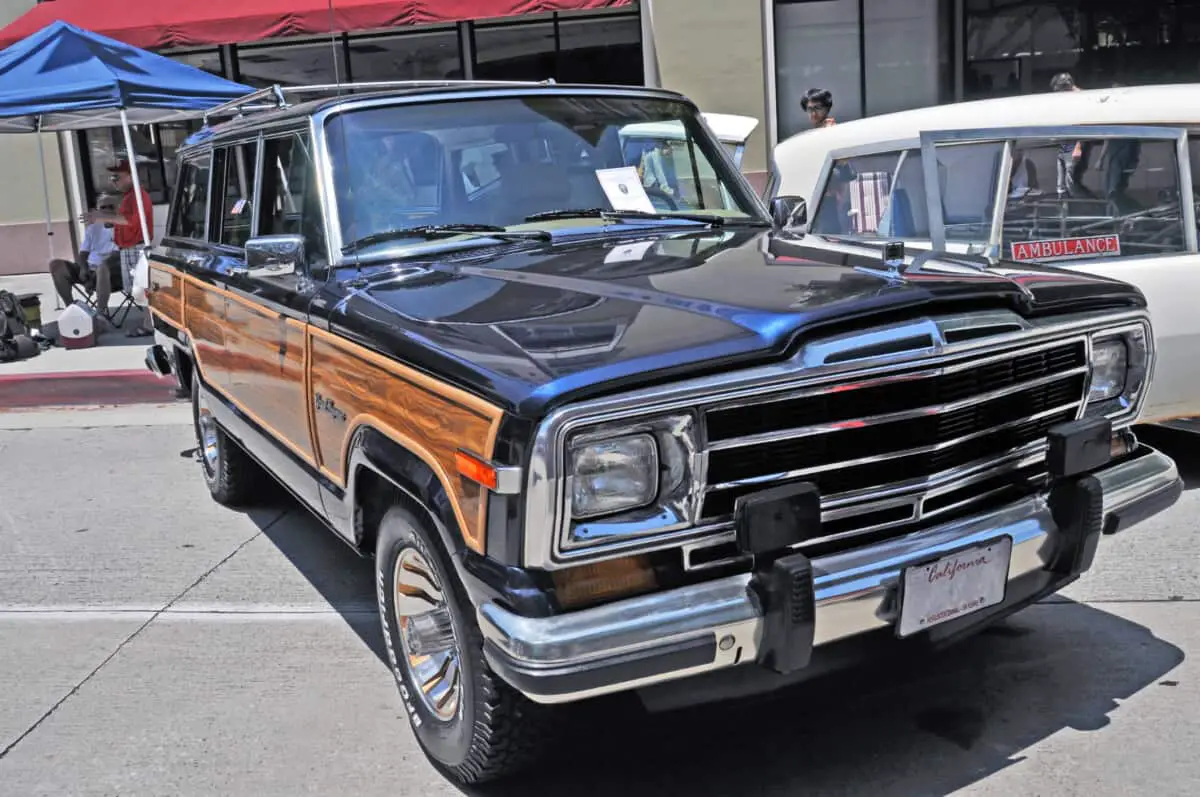
Different models, such as the Cherokee and Grand Cherokee, were also made to provide comfort without compromising off-road capabilities. These models are just as beloved today as the C.J. and vintage Wranglers.
Jeep’s Turn of the Century
When the 20th century ended and the world stepped into the new millennium, the minds behind Jeep started to take new risks and appeal to new different consumer niches. Further, the first significant change to the original Jeep occurred: more doors.
For the better part of nearly a century, Jeep M.B.s, C.J.s, and Wranglers all only had two doors. This aligned with their ideals of simplicity and allowed for a shorter wheelbase, but times were changing.
Consumer demand eventually led to the production of a four-door model of the Jeep Wrangler. This model was much the same as the originals, but it had a longer wheelbase and sought to appeal to American life’s more daily driving elements.
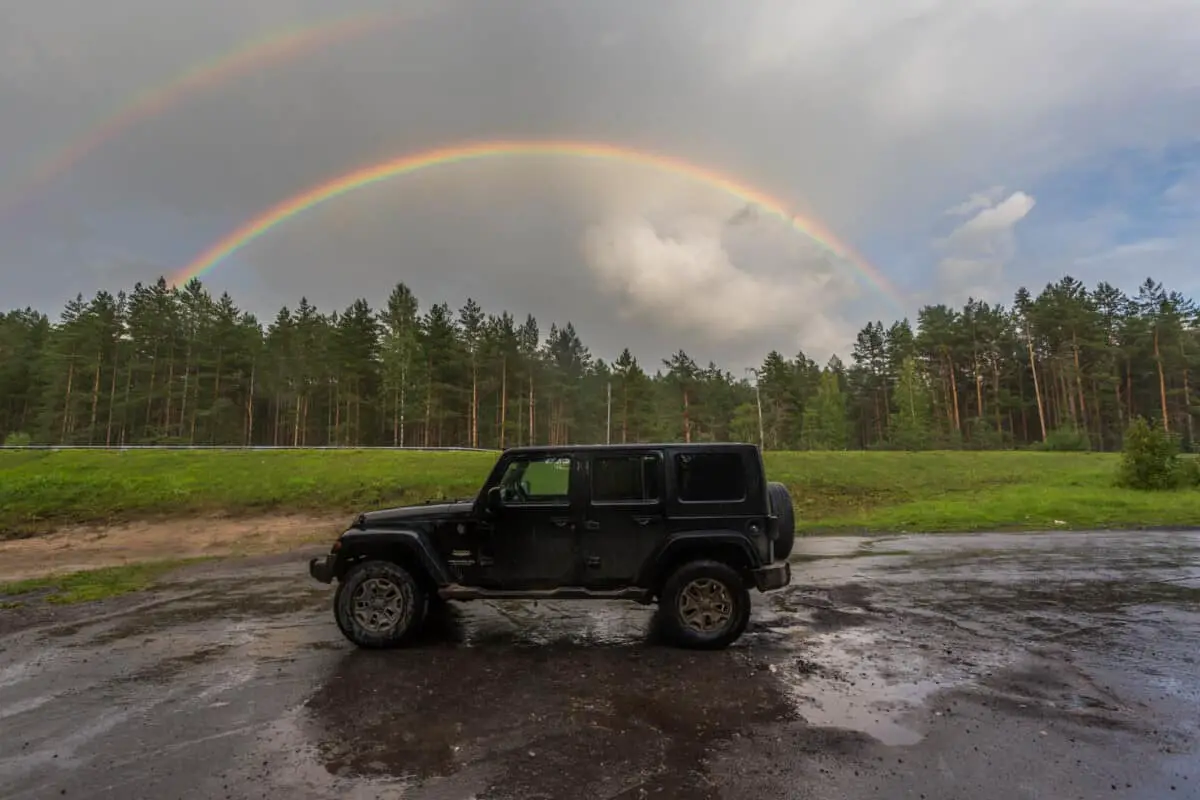
The four-door model is adept at off-roading, but its longer wheelbase limited it a bit more when compared to the two-door version. This compromise was deemed okay, though, because these new Jeeps could fit more easily to the needs of the public.
Jeep also began to experiment with different models of vehicles. The Cherokees and Grand Cherokees went through facelifts, and higher trim levels were made available to those looking for luxury. Various models such as the Liberty and Patriot were also introduced, furthering Jeep’s desire to tap into more than the off-road market.
Who Makes Jeeps Today?
Ever since Willy’s Overland made military-style off-road vehicles available at large to the public, the demand has remained. With that demand has come lots of new appeals to different markets, but the original ideal of performance in harsh conditions or off-road has remained.
Jeep is produced by its own company, owned by Fiat-Chrysler. Fiat is an Italian car brand known for its small European town cars, while Chrysler is a well-known American mid-tier car brand.
For the most part, though, you won’t find many hints of either company in Jeep. The Jeep brand tends to produce vehicles aligning with the original purpose. With the new owners, though, some changes have occurred.
Fiat-Chrysler has kept true to Jeep’s name by maintaining its off-road and 4×4 abilities while adding new luxuries and amenities that contemporary car consumers demand. In models such as the Grand Cherokee and Renegade, one can find comfortable interiors and family-oriented designs.
What Has Changed?
Throughout Jeep’s entire lifespan, much of the original design of the M.B. has remained. While many new names have appeared with contemporary amenities and uses, the brand has followed the same founding principles.
A critical change, though, has been the introduction of hardtops. The original M.B.s designed for military use never included a hardtop. If necessary, they could be outfitted with a canvas topper.
With civilian use, though, the need for a solid roof quickly came. Most Jeeps sold since then have included a removable hardtop and a soft top.
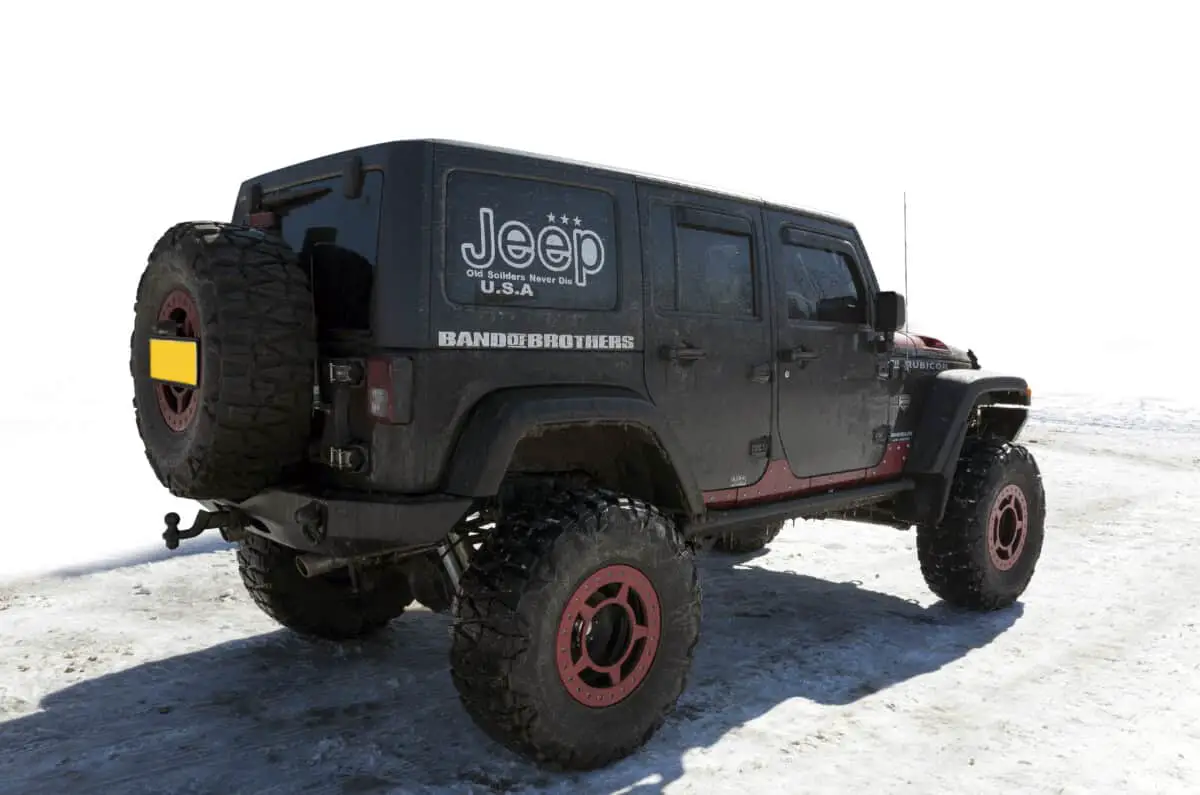
This hardtop most comes in handy during cold winter months, where a canvas top would provide little insulation. Further, these tops are designed to be easily removable for drives on warm summer days.
The hard and soft tops have become so closely associated with Jeeps that it’s easy to forget the originals never included them. Weight requirements simply would not allow for it, nor was it necessary.
Some other fundamental changes that have occurred with Jeeps:
- Air Conditioning: Although heavy and unnecessary, climate control has made its way into all Jeeps.
- Radio and Sound System: The first Jeeps only ever had military radios, if that. These days you will have no problem bumping your tunes
- Choice of Transmission: Modern Jeeps regularly have automatic transmissions, but different manual and automatic transmissions have been offered through the years.
- Engine: Most Jeeps had four-cylinder engines, but newer models offer larger engines with more cylinders and displacement
- Doors: While original Jeeps rarely had doors, civilian models included them
In Conclusion
Jeep did not attain its name through any rogue marketing scheme. Instead, it earned its name through battlefield testing, some silly strokes of luck, and misunderstandings. To this day, the Jeep’s name symbolizes a part of American history.
When one thinks of off-road capabilities and rugged work requirements, the first name to come to mind is frequently Jeep.
Whether from a silly nickname or a colloquial saying, the Jeep name will persist in America’s mind and will always be there to help you keep…The Wilderness on YOUR Side!

